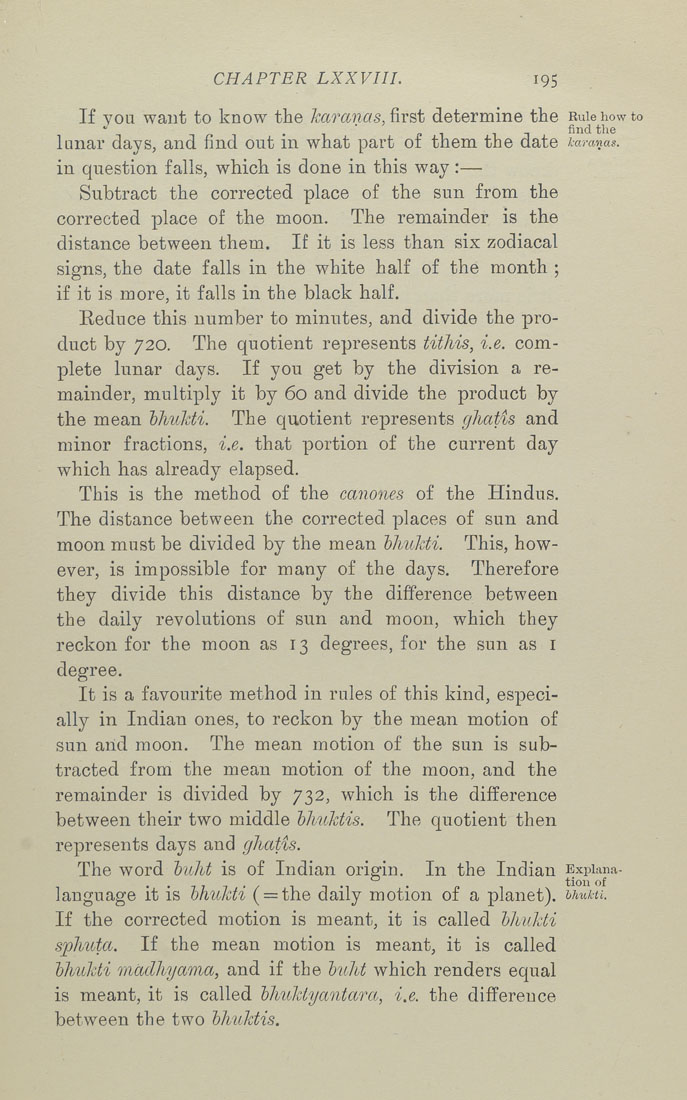CHAPTER LXXVIII. 195
If vou want to know the karctnas, first determine the Rule how to
f> -1 fill ^^'^ ^'^®
lunar days, and find out m what part of them the date karanas.
in question falls, which is done in this way:—
Subtract the corrected place of the sun from the
corrected place of the moon. The remainder is the
distance between them. If it is less than six zodiacal
signs, the date falls in the white half of the month ;
if it is more, it falls in the black half.
Reduce this number to minutes, and divide the pro¬
duct by 720. The quotient represents tithis, i.e. com¬
plete lunar days. If you get by the division a re¬
mainder, multiply it by 60 and divide the product by
the mean bhukti. The quotient represents ghatis and
minor fractions, i.e. that portion of the current day
which has already elapsed.
This is the method of the canones of the Hindus.
The distance between the corrected places of sun and
moon must be divided by the mean bhiddi. This, how¬
ever, is impossible for many of the days. Therefore
they divide this distance by the difference between
the daily revolutions of sun and moon, which they
reckon for the moon as 13 degrees, for the sun as i
degree.
It is a favourite method in rules of this kind, especi¬
ally in Indian ones, to reckon by the mean motion of
sun arid moon. The mean motion of the sun is sub¬
tracted from the mean motion of the moon, and the
remainder is divided by 732, which is the difference
between their two middle hhuktis. The quotient then
represents days and ghatis.
The word buht is of Indian origin. In the Indian Expiana-
language it is bhukti ( = the daily motion of a planet), hhukti.
If the corrected motion is meant, it is called bhukti
sphuta. If the mean motion is meant, it is called
bhukti mctdhyamct, and if the buht which renders equal
is meant, it is called bhuktyantarct, i.e. the difference
between the two bhuktis.
|








